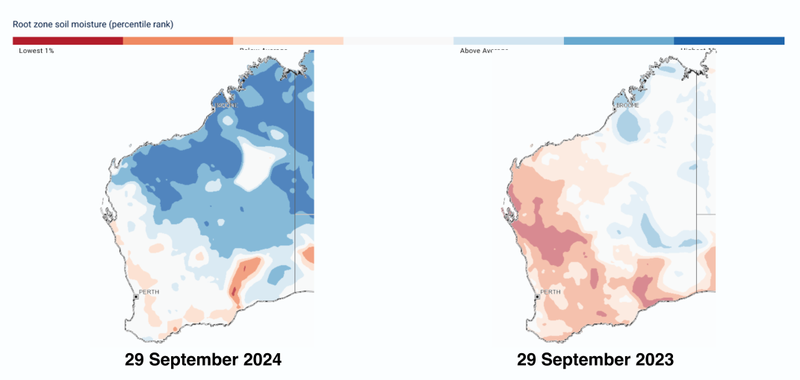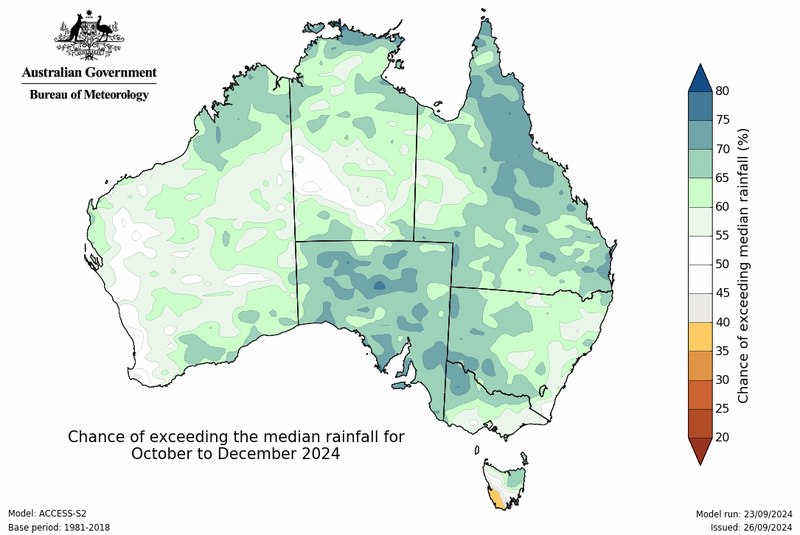Outlook for the 2024 Perth Grass Pollen Season
Oct. 4, 2024
The 2024 Perth grass pollen season is looking like it mioght surpass those of previous years, largely due to robust early-season vegetation growth and higher soil moisture levels compared to 2023.
But there’s a catch – this prediction depends on whether we get the predicted spring rainfall. If that happens, we’ll likely see a burst of grass growth toward the end of the season, which could make things rough for those with allergies. Right now though, the dry, warm weather through August has lowered soil moisture, which might delay the start of the season and lead to a lighter than normal season.
Let’s break down the current conditions. Winter rainfall was mostly close to average in the southwest, with August bringing average to above-average rainfall across Greater Perth. Soil moisture levels across much of Western Australia have shown a noticeable improvement compared to the same period last year. Adequate root zone soil moisture levels are critical for grass growth and flowering.

Satellite images showing vegetation greenness in and around Perth for September 2024 (left) and September 2023 (right). Image adpted from the Bureau of Meteorology.
How have these conditions affected surrounding grasslands, which are the source of much of Perth's grass pollen? The second figure compares satellite images of vegetation greenness in in September 2024 (left) and September 2023 (right). Sattelite data suggests that grasslands around Perth are greener compared to the same period last year. This suggests that grass growth has been more robust this year, potentially due to improved soil moisture levels over last year's record lows.

Satellite images showing vegetation greenness around Perth for September 2024 (left) and September 2023 (right).
Turning to the rainfall forecast, the final image shows that Perth is likly to reach its typical rainfall through the end of the year, while large parts of Western Australia may receive above median rainfall. This may further improve root zone soil moisture further supporting grass growth and pollen production in this region.

Map showing the chance of above average rainfall across Australia between October and December this year. Image adapted from the Bureau of Meteorology.
So, what does all this mean? Given the current conditions and forecasts, the grass pollen season in Perth may start slightly earlier than usual and could be more intense than last year. Favorable weather, especially in October, could drive additional grass growth and lead to a heavier season in November and December. If you have allergies, it’s smart to stay alert and take steps to protect your health as the season progresses.
How to Prepare
For those affected by hay fever or asthma, preparation is crucial. Stay informed by tracking daily pollen counts via the Perth Pollen App and adjust your plans on high pollen days. Make sure to consult with healthcare providers to have an action plan in place, especially if you suffer from asthma or allergies.
Where to Get Pollen Information
The Perth Pollen App is available on both the Apple and Google Play Store, offering real-time notifications about pollen levels. You can also follow the Perth Pollen team on X (formally Twitter) and Facebook for updates.


